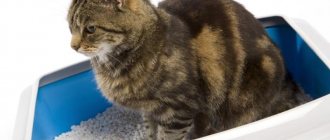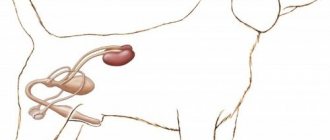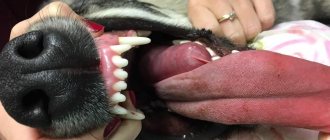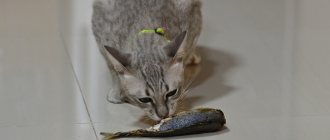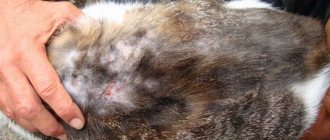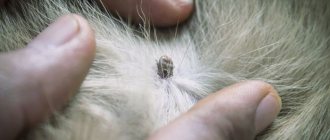Inflammatory damage to the genital organ - balanoposthitis in a cat, develops as a result of violation of hygiene standards, infectious processes, damage to the intimate area or against the background of general diseases of the body. The pathology is characterized by redness and discharge from the penis. If the penis is swollen and additional symptoms appear, it is necessary to have your pet examined by a veterinarian.
Causes of disease in cats
Balanoposthitis is a pathological inflammatory process localized in the area of the head of the penis in a cat and the foreskin, which performs the protective function of the mucous membranes. In veterinary medicine there is a risk group for the occurrence of balanoposthitis. These are cats that have not undergone castration and often come into contact with other animals, especially females with a history of infections of the reproductive system.
The reasons for the development of inflammation in the area of the glans penis are also:
- Inflammatory processes in the genitourinary area - cystitis and urethritis, damage to the mucous membranes of the urinary canal, inflammation and enlargement of the prostate gland, inflammation of the appendages (testicles).
- Pathologies that do not have an inflammatory nature of origin. This group includes urolithiasis (urolithiasis), often diagnosed in cats, phimosis (characterized by incomplete exposure of the glans penis from the preputial sac), paraphimosis (a pathology characterized by compression of the glans penis by the foreskin at the time of sexual arousal, which leads to problems with blood supply in this place).
- Diseases of an infectious nature. Dangerous sexually transmitted infections transmitted exclusively through sexual contact, as well as pathologies caused by the activation of pathogenic bacterial or fungal microflora.
The development of balanoposthitis in a domestic cat can be caused by mechanical damage to the mucous membranes from foreign objects, malignant or benign neoplasms on the penis or in nearby tissues. Inflammation of the preputial sac and head of the penis can be caused by diseases of the endocrine system (for example, diabetes mellitus), a sharp decrease in the body's defenses, and congenital pathologies - cryptorchidism.
Balanoposthitis develops in males due to a genetic predisposition, allergic reactions to certain detergents used for bathing the animal. Excessive washing of the animal, as well as the use of chlorinated water for these purposes, can provoke the development of the inflammatory process.
Irritation of the mucous membranes and, as a result, inflammation, develop in pets in the area of the external reproductive organs when exposed to chemicals intended to combat ecto- and endoparasites. Less commonly, the cause of balanoposthitis in a cat is a poisonous insect bite or obesity.
Therapeutic measures
How is balanoposthitis treated in a cat? In order to prescribe adequate and effective therapy, it is extremely important to immediately identify the root cause of the disease. In particular, if a bacterial etiology of inflammation is suspected, a scraping is taken from the foreskin and sown on a nutrient medium. A culture of the microorganism is grown, from which a drug suitable for its destruction is selected. If inflammation is caused by frequent washing, stop washing the genital area with soap and treat the affected “regions” with emollients.
Symptoms and diagnosis of pathology
The severity of signs of the disease is indirectly affected by the age of the pet, the factor that provoked the inflammation, the form and duration of the pathological process. At the initial stages of the development of balanoposthitis, the following symptoms occur:
- severe inflammation (redness) of the prepuce and apex of the genital organ;
- increased attention of the cat to the genitals (frequent licking);
- discharge of exudate from the urethral canal (may be purulent, greenish-yellow);
- unpleasant odor from the animal;
- swelling and swelling of the genital organ;
- decreased sex drive or complete absence of reproductive instincts;
- change in behavior - the pet expresses concern due to painful sensations.
In the absence of timely treatment, the intensity of symptoms increases. Bloody discharge from the urethral canal appears, the animal experiences severe weakness, activity and appetite decrease.
Upon examination, the owner notes the appearance of specific ulcers and lumps on the penis. The inguinal lymph nodes increase in size, which leads to an increase in local and general body temperature. Severe inflammation that has developed in the male genital area leads to problems with urination.
Lack of treatment for the acute form of balanoposthitis inevitably leads to a transition to a chronic course. The severity of painful sensations decreases, as does the amount of purulent exudate released. The pet constantly feels discomfort, especially when urinating. Phimosis develops, causing changes in the scar pattern; the head of the penis cannot be exposed normally during sexual arousal.
The appearance of the first signs of pathology is a reason to immediately seek help from a veterinary clinic. The specialist will conduct a general clinical examination, collect anamnesis and prescribe a number of laboratory tests. A general analysis of blood and urine is indicative, which makes it possible to determine the strength of the inflammatory process. Exudate samples are also taken for further research and identification of the type of pathogen.
Symptoms of the disease
The severity of symptoms depends on the cause of the lesion, the duration of the disease, the age of the cat and concomitant diseases.
Manifestations of the initial stage of balanoposthitis:
The pet often licks the problematic part of the body.
- inflammation of the foreskin and glans;
- frequent licking of the cat's genital area;
- purulent discharge of varying intensity of yellow or green color on the penis;
- unpleasant odor of discharge;
- swollen, edematous penis and affected area;
- decrease and absence of sexual instincts;
- restless behavior;
- discomfort, soreness of the genitals.
Balanoposthitis is complicated by the following symptoms:
- blood in the discharge;
- weakness, lethargy;
- decreased or lack of appetite;
- the appearance of compactions, ulcers, blisters;
- enlarged lymph nodes;
- temperature increase;
- blood and erosions on the head;
- difficulty urinating.
Long-term balanoposthitis becomes chronic with a decrease in the severity of pain and the amount of purulent discharge with constant discomfort and aching sensations. The tissues of the head and foreskin undergo cicatricial changes with subsequent difficulty in completely exposing the organ.
Treatment of scratching and related diseases
First of all, an anamnesis of the disease is collected, the living conditions of the animal, its diet, behavior and habits are studied. Next, skin scrapings and hair samples are taken. If the test result is positive, the sick cat is treated with antifungal agents. Symptoms are then treated. If secondary infections are detected, additional treatment is prescribed. Itching is relieved with corticosteroids and antihistamines.
With symmetrical alopecia, the animal loses hair in parallel on both sides of its body. The skin is usually not damaged, but there is severe itching accompanied by hair loss. It is necessary to exclude the presence of fleas and check the sanitary condition of the cat’s home, as well as a thorough study of its diet.
Balanoposthitis in animals
Balanoposthitis in animals is an inflammation of the mucous membrane of the penis and prepuce in males, resulting from traumatic damage to the organ and the penetration of pathogenic microflora (staphylococci, yeast-like fungi).
The disease occurs against the background of trichomoniasis, blistering rash of viral/microbial origin, campylobacteriosis.
The disease is caused by the development of bacteria in the tissues of the reproductive organs.
This is facilitated by the accumulation of smegma (secretions consisting of sebum, dead epithelium, moisture), unsanitary keeping of animals, and trauma to the penis due to inaccurate coitus.
Reproduction
In cats and kittens, puberty occurs at the age of 6-8 months.
It is at this time that they are ready to give birth. However, the age at which male cats are able to produce offspring may vary depending on the conditions of detention, breed, and nutrition. It is worth noting that puberty occurs earlier than the animal’s body is fully formed, so the first heat does not at all indicate readiness to give birth. Therefore, the best time for a cat to give birth is no earlier than 8-9 months. Cats are polycyclic, characterized by sexual seasons and reflex ovulation. The sexual cycle is the changes that a cat's body goes through from ovulation to ovulation. Females are ready to mate only during estrus, males - at almost any period. If a cat is mated to several males, then the litter may contain kittens from different genetic fathers. At the age of approximately 10 years, animals stop hunting sexually (the manifestation of sexual reflexes).
When fertilized, the cat becomes pregnant and lasts about 60 days. Then childbirth takes place, during which 3 to 6 kittens appear. They are born without teeth, blind and deaf. The weight of a newborn kitten is no more than 70 grams. Childbirth lasts up to 5 hours, at the very beginning the cat begins to behave restlessly and makes a nest. When a kitten is born, the cat begins to lick it, bites through the membrane, removes it, and bites off the umbilical cord.
Endometritis in dogs and cats
Endometritis in a dog (cat) is inflammation of the endometrium without accumulation of purulent secretion in the uterus. Often observed after estrus or complicated childbirth. It is characterized by light discharge - serous, bloody, mucopurulent. The vulva is swollen, the vaginal mucosa is hyperplastic.
Cause: hormonal disorders complicated by secondary bacterial infection.
If left untreated, it turns into pyometra - accumulation of pus in the uterine cavity.
Treatment of endometritis
Mild forms can be treated conservatively with oxytocin and antibiotic therapy. If there is no result, the uterus and both ovaries are removed.
Treatment of EGC and dietary supplements
It is necessary to carry out flea treatment on the animal. Next, corticosteroids are prescribed.
Food allergies occur after a pet’s body reacts to a number of proteins that are part of the food it eats. It is widespread among cats and can occur at any age in males and females. Allergies are identified in case of skin itching, vomiting and diarrhea. Also, patches of scratching may form on the face and neck. The diagnosis is confirmed by a positive result of a food allergy test.
Treatment of bladder inflammation
global $ads_google;
//data-ad-slot=”2475549904″ $ads_google = empty($ads_google) ? false : true; ?> if ($ads_google == false) {?> $ads_google = true; ?> } ?> To restore health, comprehensive treatment is necessary, including medication and home care. The course must be prescribed by a veterinarian. The list of measures necessarily includes antibacterial therapy, for which tablets or injections are used. When treating cystitis in cats, antispasmodic and analgesic medications are simultaneously prescribed to relieve pain.
If necessary, the pet's bladder is cleansed of infectious contents. To do this, warm saline solutions, for example, sodium chloride, and then antiseptic solutions are injected into the organ cavity using a catheter. Washing is repeated until the emerging liquid has a transparent color. If the body is severely dehydrated, the animal is given drips with a saline solution, which restores the water-mineral balance. In some cases, glucose is administered. The number of droppers depends on the volume of urine excreted per day.
A veterinarian should prescribe medications for cystitis and treat them, since he has information about the compatibility of drugs and the cat’s health condition. Knowing about the presence of concomitant diseases, the specialist can adjust the standard treatment regimen. The task of the owner of a fluffy cat is to follow the purpose and create optimal home conditions.
General information
Raccoon baculum
The structure of the penis in animals is quite diverse, but it always starts from the anterior wall. In turtles, crocodiles and some birds, the penis is unpaired and is a groove-like thickening of the ventral wall of the cloaca. Under the groove there is a fibrous body and an accumulation of cavernous tissue, when it swells, the groove turns into a tube. At the end of the tube there is an organ separate from the wall of the cloaca, which is blown out like a head. The tubes of reptiles fused in the middle form the penis of oviparous animals, which in a calm state hides in a pocket of the abdominal wall. In viviparous women, due to reduction of the posterior part of the cloaca, the penis is placed externally. In marsupials, rodents and insectivores, its apex is turned backwards. The penis of elephants, hyraxes, rhinoceroses and tapirs is oriented similarly in a calm state, but during an erection in these animals it turns forward. The position of the penis with the apex forward in placentals is caused by the development of the perineum. Gradually, a number of animals developed cavernous bodies of the penis. Marsupials, cetaceans, predators, pinnipeds, rodents, bats, prosimians and some monkeys have an unpaired bone in the terminal part of the penis - the baculum. Also, in accordance with the two vaginas of females, the penis of marsupials is often forked, with each half having its own branch of the genitourinary canal.

